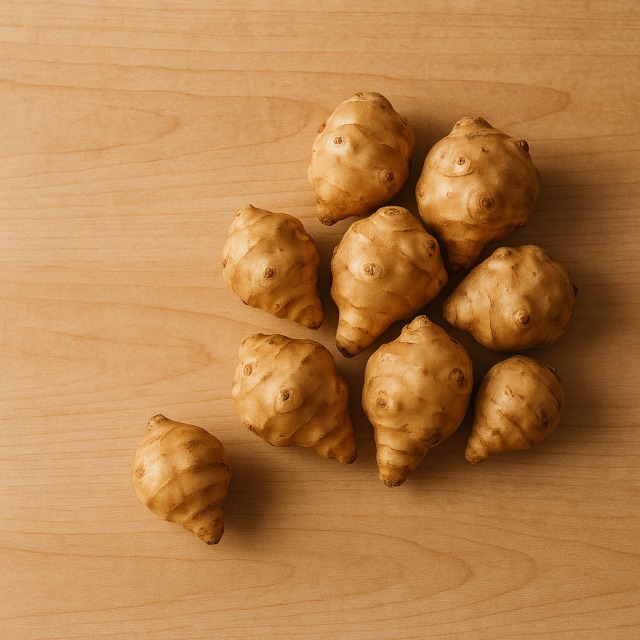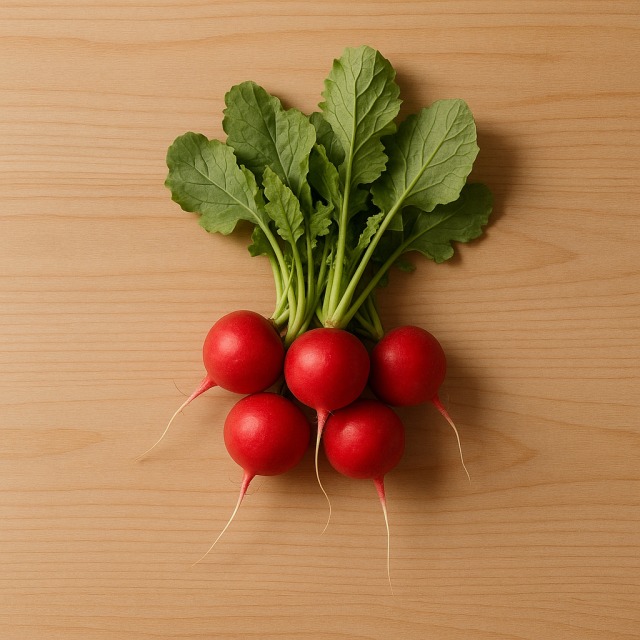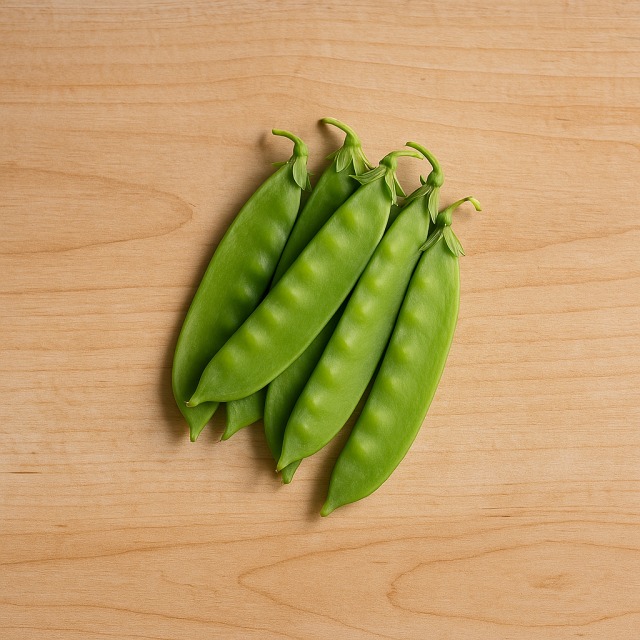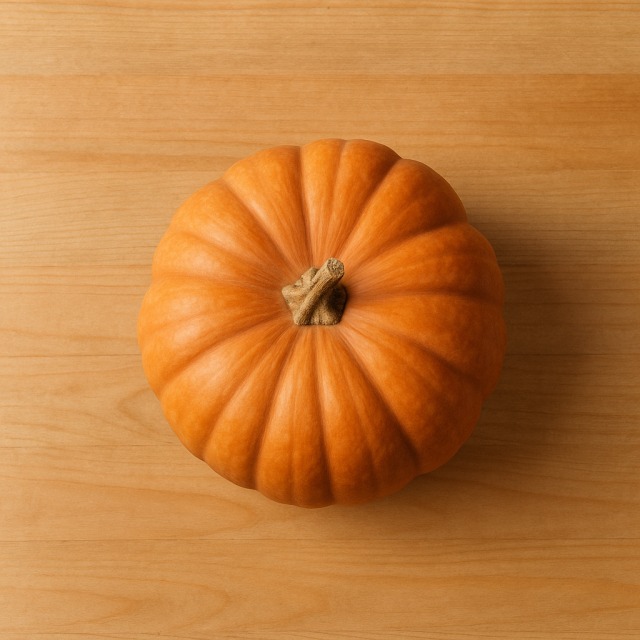Calorie Chart / Vegetables / Turnip
How Many Calories Are in Turnip?
Calculation of the nutritional value & Recommended Dietary Intake of turnip
For g and a calorie requirement of kcal
| Calories 40 kcal | Proteins 2 g | Lipids 0.4 g | Carbohydrates 7 g |
| 2% | 3% | 1% | 3% |
Health benefits of turnip
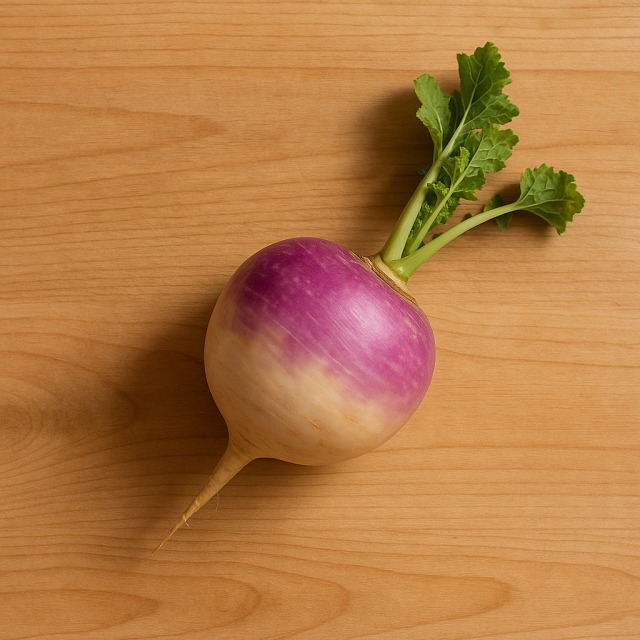
Turnip - 100g
Calories 20 kcal
Proteins 1 g
Lipids 0.2 g
Carbohydrates 3.5 g
With only 20 kcal per 100 g, the turnip is clearly a low-calorie vegetable, ideal for anyone who monitors their daily calorie intake or wishes to create meals with very few calories. Its modest energy value comes from a composition that is low in lipids and proteins and moderate in carbohydrates, which further supports low-calorie objectives.
Beyond its light-calorie profile, the turnip supplies interesting micronutrients. It is a source of vitamin C, contributing to immune support and antioxidant protection; vitamin B6, which participates in energy metabolism; and potassium, helpful for normal blood pressure. The purple-skinned varieties also contain glucosinolates, phytochemicals that are being studied for their supposed anticancer properties (research is ongoing, hence the term "supposed").
Historically, the turnip was a staple root in Europe long before the arrival of the potato. Its ability to keep well through winter made it essential for populations looking for sustenance with minimal energy expenditure in cultivation. This background explains why it still appears in many traditional stews where calories are kept moderate without sacrificing volume.
Tips for incorporating turnip into a balanced diet
Because of its very low-calorie content, the turnip is perfect for bulking up plates without a calorie overload. Add diced turnips to a beef broth, mix them into a vegetable soup or roast them alongside chicken breast for a comforting dish that remains light in calories. Their mild flavour also lets you reduce the amount of starchy sides, further lowering the total calories.
Try a mash made from half turnips and half potato; you get the creamy texture people love while cutting calories when compared with pure potato purée. Glazed baby turnips cooked with a touch of honey pair beautifully with grilled salmon, again keeping calories under control but providing quality protein.
If you fancy something rustic, incorporate turnip cubes into a classic beef bourguignon; they absorb the sauce, add fibre, and allow you to serve a larger portion with similar calories. Likewise, turning raw turnip into thin ribbons for a salad with apple and walnut brings crunch and freshness while maintaining low calories.
Frequently Asked Questions
- How many calories are in turnip?
- There are 20 kcal per 100 g.
- Is turnip considered a low-calorie food?
- Yes, with only 20 kcal per 100 g, turnip is clearly classed as a low-calorie vegetable and can help lower the overall calorie count of a meal.
- Does cooking turnip change its calorie content?
- Boiling, steaming, or roasting does not create or destroy calories; however, added fat or sugar will raise the final calorie count.
- Which vitamins justify choosing turnip over other low-calorie vegetables?
- Turnip supplies vitamin C and vitamin B6 along with potassium, making it a nutrient-dense yet low-calorie option.
- Can athletes include turnip in high-protein, controlled-calorie meals?
- Absolutely. Combine grilled turnip with lean protein sources such as tofu or turkey cutlet to keep calories in check while meeting protein goals.
- Are turnip greens different in calories from the root?
- Turnip greens provide slightly more calories (around 30 kcal/100 g) but remain low; they also offer higher levels of vitamin K and calcium.
- How can I make a turnip dish satisfying without pushing calories up?
- Use strong herbs and spices, a splash of soy sauce or a spoon of vinaigrette instead of butter or cream; flavour increases while calories stay minimal.
Similar foods
Information provided by Calorie Menu may contain inaccuracies or errors. It cannot, under any circumstances, substitute medical advice or medication.


